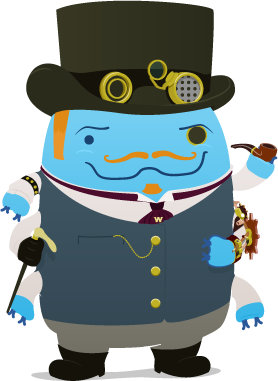
Waterbear is a toolkit for making programming more accessible and fun. Having a visual language means you don't have to focus on learning a syntax to start programming.
Try it outJoin our community of people using Waterbear to solve problems. Whether you are using it to build cool projects, teaching others to code, or contributing to expand Waterbear's capabilities, we would love to hear about how you use Waterbear. Email us and join the mailing list.
Our blocks are heavily inspired by MIT's Scratch language, but the goal is not to slavishly duplicate Scratch, or to create a programming language, but to create a visual syntax tool that can be used with a variety of languages and projects, and to make it as widely available as possible. Waterbear runs in a variety of web browsers, including Mobile Safari on the iPad
Waterbears, also known as tardigrades, or moss piglets, are probably the most resilient creatures on Earth, able to survive extremes of heat and cold, pressure (high pressure and the vacuum of space), dehydration, radiation, environmental toxins. Since we want to be able to create code that is robust, they are an appropriate mascot. Also, they are cute.
[mostly via Wikipedia]
Our Waterbear is beta software and under active development as we work to improve the interface, organize the blocks, and build curriculum around it. Fork us on Github and help us to make Waterbear even better!
Waterbear is also a toolkit for making programming more accessible and fun. Having a visual language means you don't have to focus on learning a syntax to start programming. It's good for kids, artists, and anyone who would like to make thir computer do something new without having to become a "programmer" (although it could lead to that).
"It goes against the grain of modern education to teach children to program. What fun is there in making plans, acquiring discipline in organizing thoughts, devoting attention to detail and learning to be self critical"
— Alan Perlis, first recipient of the Turing Award
Waterbear's system of draggable, snappable blocks are build using clean HTML5, CSS3, and Javascript. The Javascript playground for Waterbear allows you to create Waterbear scripts, see the Javascript it will generate, and run it right in the browser.